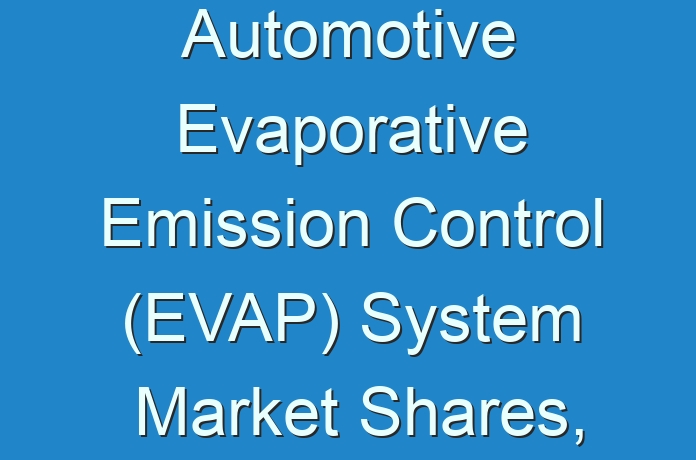
Automotive Evaporative Emission Control (EVAP) System Market: Introduction
- The automotive evaporative emission control (EVAP) system is used to seal the fuel systems of the vehicle. This prevents fuel vapors from the fuel system and the fuel tank from escaping into the atmosphere. Fuel vapors contain various types of hydrocarbons, which can be harmful for the environment. These hydrocarbons can cause and create photochemical smog in the environment when they react or come in contact with sunlight and air.
- Exposure to photochemical smog can cause various respiratory ailments in humans. Gasoline has high volatility, and it evaporates rapidly in the atmosphere even while the engine is turned off. Moreover, it can pollute the atmosphere even when the vehicle is idle or parked. Automobile manufacturers have been instructed to reduce the emission of volatile organic compounds (VOC) from the tail pipe of the vehicle due to evaporation. The major amount of VOCs is held by gasoline and oils, which vaporize and escape into the atmosphere from the fuel system and engine.
For More Industry Insight, Request Brochure@ https://www.transparencymarketresearch.com/sample/sample.php?flag=B&rep_id=64886
Key Drivers of Global Automotive Evaporative Emission Control (EVAP) System Market:
- Rising solar radiation and ambient temperature across the globe increases the fuel tank temperature. High tank temperature results in the evaporation of petrol with a consistent increment in the internal pressure, causing fuel expansion. According to Environmental Protection Agency (EPA), two-wheelers lose around 2% to 5% fuel due to high temperature. Rising fuel losses and air pollution owing to evaporative emission is estimated to drive the automotive evaporative emission control (EVAP) system market during the forecast period.
- Stringent government standards focusing on reducing evaporation of volatile organic compounds and tail pipe discharge are propelling the demand for automotive evaporative emission control (EVAP) systems. Regulatory standards such as California Air Resources Board (CARB) are emphasizing the control of carbon monoxide, hydrocarbons, and nitrogen oxide pollution in order to improve air quality, which in turn is boosting the global automotive evaporative emission control (EVAP) system market.
- Automobile manufacturers are extensively investing in R&D to innovate cleaner vehicles technologies, thereby driving the automotive evaporative emission control system market. Industry participants are combining on-board diagnostic sensors with the vehicle fuel system for efficient functioning of the system. Introduction of advanced system integration with EVAP is projected to drive the industry across the globe.
Rising Adoption of Hybrid and Electric Vehicles to Hamper Market:
- Rising adaption of hybrid and electric vehicles is estimated to restrain the market. Increasing government initiatives, such as tax rebate and development of supporting infrastructure, is shifting consumer inclination toward alternate vehicles. Furthermore, ongoing steps to reduce vehicle ownership cost are likely to hamper the automotive evaporative emission control (EVAP) system market across the globe.
COVID-19 Impact:
- The COVID-19 impact globally has stalled production of emission control systems and other vital components for curbing fuel leakage from engines. Increasing stock of petrol and other fuels during winters can be used by vehicle owners after ease of lockdown restrictions. This can lead to vapor lock and engine stumbling owing to wrong use of fuel grades in vehicles. Countries are chalking up bills to assist in prevention of mixing of fuels that can degrade engine quality. Efforts of carbon neutrality by nations to reduce emission levels and support sustainable production approaches can drive the global market demand significantly.





